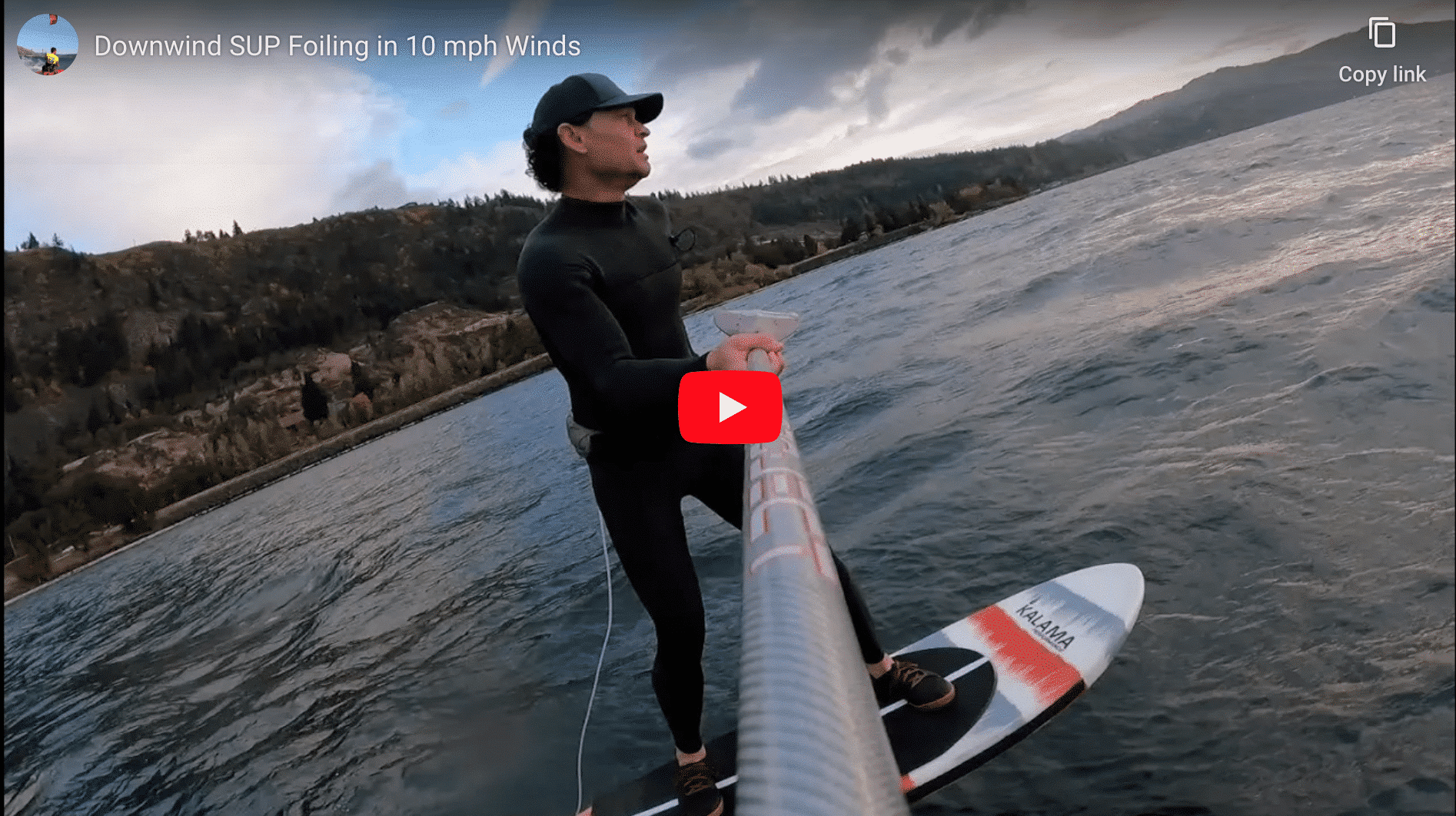Downwind SUP Foiling in 10 mph Winds … or … Why SUP Foiling is Easier Than Ever

What foiling sport accesses the lightest winds? Hint: forget the kite, sail and handheld wing. Instead grab a paddle. T.J. Gulizia shares why today’s SUP foiling gear lowers wind minimums, and his best tips to get everyone flying high.
Gear Shown in This Video
Video Transcript
Hi I’m T.J. coming to you from Big Winds in the beautiful Columbia River Gorge and I want to talk to you a little bit about my favorite water sport, and that’s downwind SUP foiling. Downwind SUP foiling has come a long way in the last three years. A lot of people have kind of given up on it because it was just so hard and inaccessible. Now though the equipment’s allowing me to go in not only high winds but take it to the lightest of light winds.
The other day I was out it was blowing maybe 10 mph and there wasn’t a single kite foiler, not a wind foiler, not even a wing foiler out on the water. But how did I get up onto the foil? Well with this paddle power. And once you’re up onto foil that’s where the foil takes over and with a little bit of technique and you can be out there riding bumps in next to nothing. As long as you know how to follow the energy with a little bit of time of your belt you’ll be out there too.
Let’s talk about the board. The boards evolved. They used to be super long and big. Then they started getting shorter and shorter and shorter. Now we’ve kind of come to a new concept here that Dave Kalama came up with after a stint into prone foiling. He stopped worrying about how short and compact the boards were. He focused on making takeoffs easier with the paddle in hand to go more like what a traditional SUP race board looks like or prone board looks like that is a little bit longer but narrower. This one is a 5’11” by 22.5″ and i’ve been really coming to enjoy this new length and width. As long as it’s got the volume to compensate I’ve got plenty of balance on this new board.
The foils have evolved a long ways as well. One of my favorites for light wind foiling is the Takuma LOL 1900. We’ve been experimenting with everything from long mats to short masts, and I’ve kind of landed on the 75 cm because it really allows for easy takeoffs. We’re trying to make it as easy as possible for myself and others out there. Go with the 75 cm mast and amaze yourself on how much easier it is to get up onto foil than it is the longer 85s and 95s. Experiment a little bit with the tail wings as well. You know the bigger tail wing is what the Takuma LOL 1900 comes with stock. It offers awesome balance. Same for medium sizes. But I’ve kind of rested on the smaller tail wings as long as there’s enough surface area to keep that pitch stability. There’s the least amount of drag on the smallest tail wing.
And that brings us to the right paddle. The right paddle cut to about head height. Something that’s got enough surface area to get you going in next to no wind or to catch bumps or waves. I’ve rested on the Black Project Surge Slim Large which is an 85 cm blade. This is the exact same paddle that I SUP surf with so no need to have a specific paddle for foil and surf. Use your surf paddle. It’ll work great for foiling.
Now let’s talk about some tips on how to piece all of this together. One of the tips that I learned from a good friend of ours Kane De Wilde who’s probably one of the best foilers over on Maui on the Progression Project podcast. If you guys aren’t tuned into this podcast you’ve got to get there. I learned a ton from Erik Antonson and his guests on the Progression Project podcast – check it out – is how to set up your foil. On your board every board length and every foil has a certain balance required and Kane said you simply lift up underneath the front wing, lift your board off the ground, and if it comes off the ground fairly parallel that’s where you want it. It took me a few times to realize that for this longer board it required me putting the mast way further forward than I normally would have. And once I got it there everything felt perfect. I could take off easier. I could pump through the bumps easier and the dead zones for that matter. So setting up your board and foil – just take a quick little lift to make sure that the board is coming up parallel to the ground and that’s where you should find the perfect balance between foil and board.
Lastly if you really want to go out into lighter winds and have success SUP foiling I encourage you to go out into dead flat water and try to pump up onto foil – knowing it might not come your first time, or second time. It took me multiple times to figure this one out, but there’s some good tips again that i learned from my buddies over on Maui on how to successfully get yourself up onto foil in flat water. If you if you can do it with that board and foil, you know you can do it in pretty calm winds as well. Thanks for joining me and hope to see you on the water!

